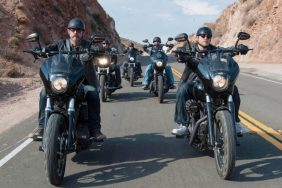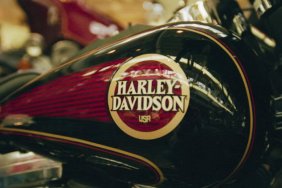As part of our ongoing automotive and motorcycle coverage, we’re taking a couple days to take a close up look at Indian Motorcycles and the business of challenging an industry giant like Harley-Davidson. In part one, we talk to Steven D. Menneto, Vice President for Motorcycles at Indian, to get to know the Minnesota-based operation.
Recently, a rival of Harley-Davidson – a Japanese motorcycle company that builds multiple cruising and touring motorcycles – held a recent full-line press event at a rural Georgia country club. On the first morning of the media gathering, that bike maker lined all of its models up in a shiny row, with the company’s name and logo prominently displayed on large banners posted all around the motorcycles. As a visiting couple strolled by the display on their morning constitutional, one said to the other, “Wow, honey. Look at all the Harleys.”
That’s the problem a competitor of the Milwaukee-based motorcycle giant faces. In the world of two-wheeled iron, Harley-Davidson is synonymous with big cruiser and touring bikes. Even if a rival makes better machines in the same class, they’re always looked on by anyone outside the enthusiast community as a Harley.
Related: Indian Roadmaster Cruises Black Hills
Indian Motorcycles, the Minneapolis based manufacturer is taking on that identity challenge while trying to reestablish itself as a prominent part of global automotive culture. Indian is actually the oldest American builder of motorcycles — beating Harley-Davidson to the market by two years in 1901. But, while Harley survived highs and lows through the years, Indian faded from the business world in 1953.
Harley-Davidson used the rock n’ roll era of the 1950s and the counterculture of the 1960s and 1970s to build its brand identity as the chosen ride of rebels. Indian missed all of that, finally returning to the American market in 2011 as a smaller division of Polaris – a builder of everything from snowmobiles to ATVs.
In the past three years, Polaris’ branding plan focused on one primary goal — letting the world know its back in business and an All-American alternative to Harley-Davidson. According to Steven D. Menneto, Vice President for Motorcycles at Indian, the company’s plan for the first 18 months of its existence was “to let them know Indian is back.”
“We knew we first needed to establish what we’d build and what styling cues we needed to make our motorcycles distinctly Indian,” Menneto said. “We knew our motorcycles wouldn’t be small. That’s not our brand. We’d make 100 horsepower, liquid cooled engines powering big motorcycles.” Of course, by 2011 everyone except dedicated riders identifies such bikes with that H-D Bar and Shield Logo.
Menneto, a veteran Polaris executive before taking on Indian, realized ownership by Polaris offered structural support and financial stability. But, the company needed to look beyond the need for that kind of capital buttressing. “We had and continue to operate with a five year plan,” Menneto explained. “Gradual, planed growth is key to that plan. We could’ve had 1,000 dealers coast to coast, and we could be building at full Polaris capacity. But, we knew it was better to build the brand first.”
Check back in tomorrow for our continued up close look at Indian Motorcycles.






